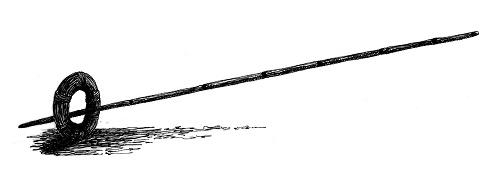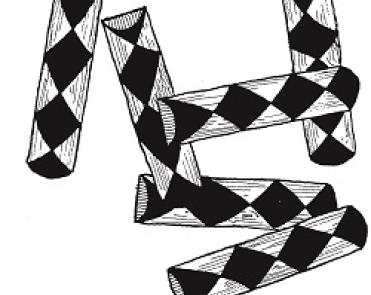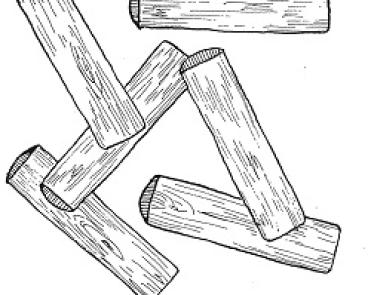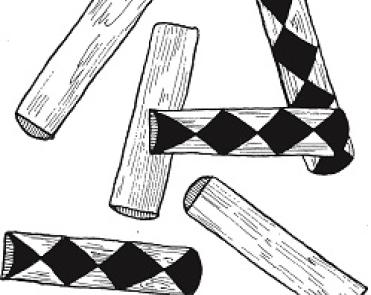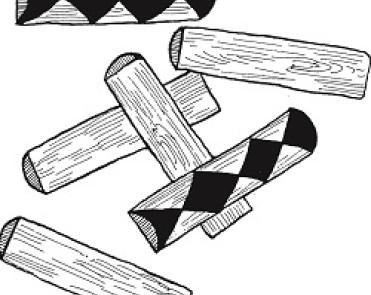Games
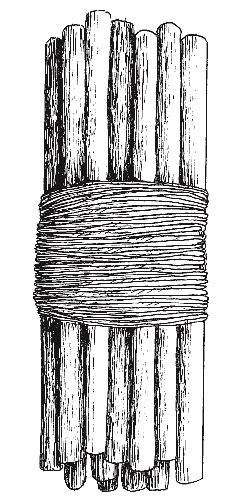
Ohlone life meant working together and helping one other. And just like today, Ohlone people had time for singing and dancing, laughing and playing. They had favorite games like stick dice, the hand game, hoop-and-pole, and juggling. Children played “cat’s cradle” using their fingers and toes to make string shapes with names like “stars,” “making daylight come,” “house,” and “deer.” They also competed in marathon-like races and in team sports. Shinny is an Ohlone game similar to field hockey. Just as we go to football and baseball games today, people sometimes traveled from distant villages to watch exciting shinny tournaments. Some Ohlone games were probably similar to those of their neighbors, the Coast Miwok and Pomo peoples of Sonoma and Marin counties. Some of the illustrations are from this area to the north.
Play the Hand Game
The Hand Game was a favorite. You need two people to play. In the Monterey area, Ohlone people used shells to play while others used deer toe bones—but you can play the Hand Game with any natural objects.
Here’s how to play:
- Get two natural objects (such as rocks) that you can tell apart.
- Collect a bunch of sticks to keep score--one stick for each point.
- Player 1, put your hands behind your back and hide one piece in each hand.
- Player 2, guess which hand has the marked object.
- If you guess correctly, it’s your turn to hide the pieces.
- If you’re wrong, the hider gets one point and gets to hide the pieces again.
The player who wins all the sticks wins the game!
Play the Walnut Game
This variation on a California Indian game is played with six walnut shells filled with pitch and little pieces of abalone. Here's a modern way to play
- Color 1/2 of each walnut shell with paint or mark it with a pen.
- The first player throws them up in the air and watch how they come down.
- Some will land with the painted side up.
- How many walnuts have the painted side up? That’s your score.
- All painted sides up gets 5 points and 4 painted sides up gets 1 point.
- Then it’s the next players turn.
- The winner is the person who gets the most points after 10 throws.
A Guessing Game for Grown-Ups
In this California Native American game, a player divides a bundle of 20 or 30 sticks into two smaller stacks. Each player guesses whether the stacks have an odd or even numbers of sticks. Now count the sticks to discover the winner… and throw again.
Stick Dice
In the old times, this game was played only by women. It used 6 “dice” made of split sticks. The rounded side of each dice was carved or painted with a pattern and the flat side was left plain.
- Drop the dice from a few inches above the ground
- If they land with either all 6 of their decorated sides or all 6 of their plain side up, the dice thrower scores 2 points
- If the dice land with 3 decorated sides up and 3 plain sides up, the thrower scored 1 point. (Sorry, no points for any other arrangement)
Best of 5 or 10 throws wins.
Pomo stick dice images by David Hjul
Hoop and Pole
One game Ohlone children played is now called "Hoop and Pole." In this game, someone rolls a hoop and one or two players try to throw a pole through it as it rolls by. Poles were made from long, straight branches. Hoops were made from natural materials such as willow branches bound into a sturdy ring. This game taught Ohlone children eye-hand coordination and cooperation. The rules for scoring points and hoop size varied from place to place. You too can play this game today. The person who throws the pole through the moving hoop the most times wins the game!
